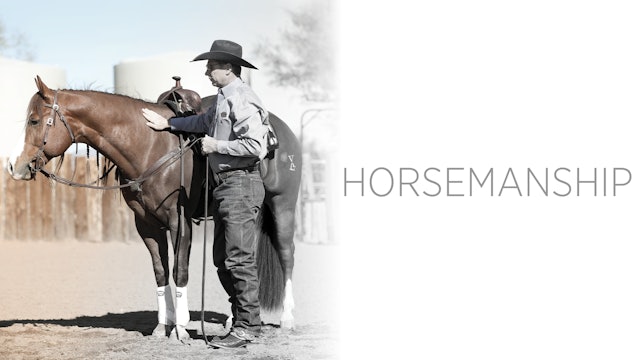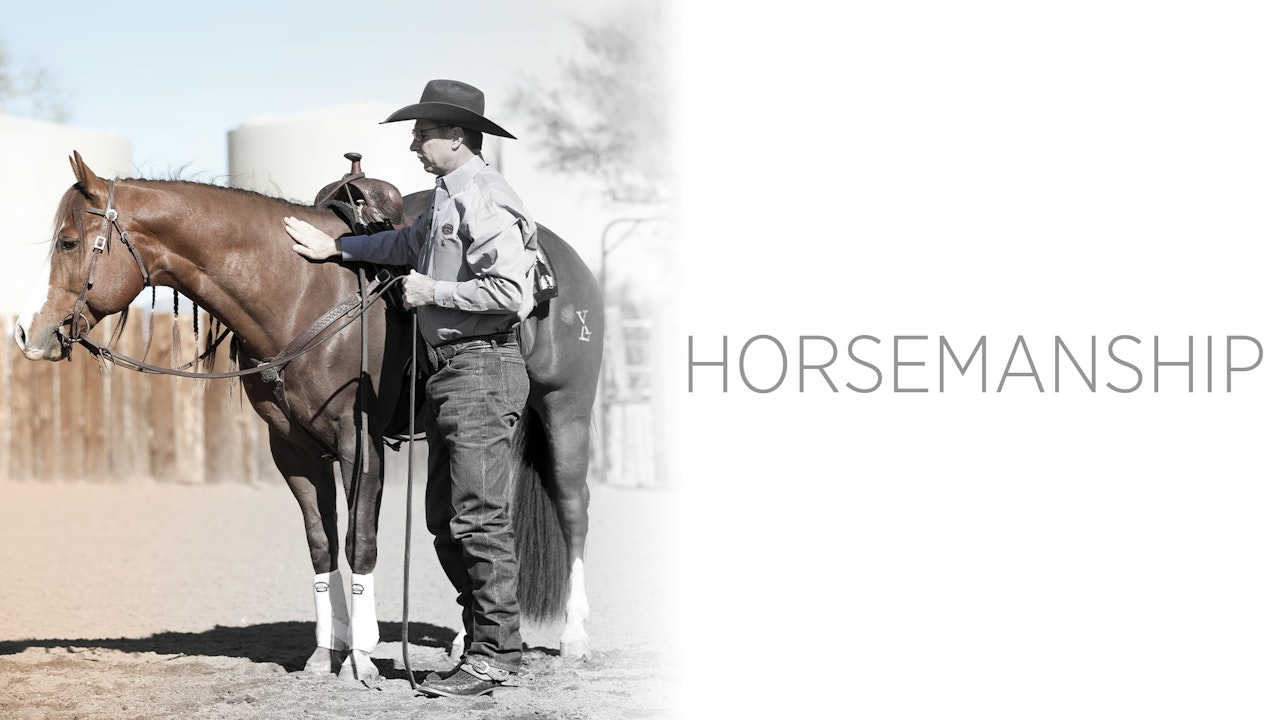Horsemanship
Build more than skills—create a true partnership of trust, clarity, and precision with Horsemanship on Ride TV. This series brings together master trainers like Al Dunning, Brad Barkemeyer, Bud Lyon, Ken McNabb, Amberley Snyder, and Monique Potts—guiding you through foundational drills that elevate both horse and rider.
You’ll walk through down-to-earth lessons like teaching proper foot placement, holding steady for the farrier, and keeping your horse focused on you. Ride smarter with hands-on techniques like backing, turning, collection, counter-cantering, and learning when and how to use your spurs—all demonstrated with real-world thinking and purpose. Whether you’re tuning a young horse or fine-tuning your seasoned partner, this series crafts better rides, better connection, and better understanding—step by step, lesson by lesson. Horsemanship on Ride TV isn't about tricks—it’s about genuine horse sense, refined with every ride.
-
Tips for Working a Cow
Brad works an experienced cow horse down the fence. He explains every step he takes and gives tips along the way.
-
Lead Departures
Brad works a green horse through lead departures. He explains what he wants the end result to look like and shows how he will get his horse there. Brad talks about the different reined cow horse events and explains what each lead departure should look like based on the event.
-
Staying Relaxed During a Run
In this video, Brad coaches Dakota as he works a cow down the fence. Brad explains why it's important to keep you and your horse calm throughout the run.
-
Introduction to Steer Stopping
Brad Lund goes over the basics of steer stopping. He talks about introducing a horse to the event for the first time, gives tips on where you should be in the chute, and talks about what you want the end result to look like.
-
Working With a Horse That Pulls
Does your horse pull when you're doing groundwork with a lead rope? Monique Potts explains how to fix it.
-
Watch Your Horse's Ears and Expression
You can learn a lot by watching what your horse's ears are doing. Natural horsemanship instructor Monique Potts explains the importance of understanding your horse's ears and expression to help better understand how he's feeling.
-
Using Gates to Get Responsiveness
While it's important to be able to open and close gates when you're doing ranch work or preparing for an event, it can also be used to help get responsiveness in a horse.
-
Using a Flag for Groundwork
Natural horsemanship instructor Monique Potts explains why she likes to use a flag when she's working with her horses on the ground.
-
Understanding Angles in Groundwork
Depending on where you put your body when working with your horse will cause a different reaction. Natural horsemanship instructor Monique Potts talks about understanding angles when working with a horse on the ground.
-
Trailering:Working With a Difficult Horse
Monique Potts talks about problem solving trailering issues with a difficult horse and how you can safely teach him how to load.
-
Trailering: Using the Butt Bar
If your trailer has a butt bar here is when natural horsemanship instructor Monique Potts likes to attach it once the horse is in the trailer.
-
Trailering:Loading With Two People
When you're first teaching your horse to trailer or are working with a difficult horse, it's easiest if you have at least two people to help with trailering. Monique Potts shows you how to load a difficult horse with two people.
-
Trailering:Loading By Yourself
Sometimes you aren't able to have extra help when loading your horse in the trailer. Monique Potts shows you how you can practice loading horses by yourself.
-
Trailering Your Horse in an Emergency
Prepare for an emergency, like wildfire evacuation, before they happen. Natural horsemanship Monique Potts explains the problems she came across when trying to load horses in a trailer during an evacuation and why you should prepare for these things and practice.
-
Desensitize Your Horse:Support Him in Scary Situations
When you're desensitizing your horse your horse might feel scared. It's important to support him in scary situations so he knows he can learn to trust you.
-
Trailering:Settling Your Horse
When you're trailering your horse, you have to remember some horses do better than others when they get to a new place. Natural horsemanship instructor Monique Potts talks about settling a horse before and after trailering.
-
Sending Your Horse Forward
One of the first parts of groundwork is teaching your horse to go forward when you ask. Here's how Monique Potts does it.
-
Groundwork Series:Send Your Horse Around You
This part of the groundwork series talks about sending a horse around you and why you would need to do something like that.
-
Reading Your Horse's Body Language
Knowing how to read your horse's body language is extremely important. It helps you stay safe, but it also helps you understand what he's thinking. Natural horsemanship instructor Monique Potts talks about understanding your horse's body language.
-
Ponying Your Horse on the Trail
In certain situations you might have to pony a horse when you're trail riding. It's important to practice ponying at home in a safe environment to teach your horse how to pony a horse or how to get ponied.
-
Move Your Horse's Shoulders on the Ground
The next step in groundwork is moving your horse's shoulders over. Being able to do this can help with small things like asking your horse to step closer to a mounting block, it can also come in handy when working with your vet or farrier.
-
Move Your Horse's Hindquarters on the Ground
Just as you would in the saddle, it's important to be able to move your horse's hind end on the ground. This helps with safety on the ground, it also helps you something like moving your horse over for a vet or farrier. Natural horsemanship instructor Monique Potts explains the importance of bein...
-
Move Your Horse's Head With a Halter
Teaching your horse to give to pressure and move his head where you need it can help you if you're trying to halter or bridle him. Natural horsemanship instructor Monique Potts explains why teaching her horse to give to pressure and be able to move his head as needed is one of the first things sh...
-
Liberty Work: Turning into the Fence
The next step in doing liberty work with your horse in the round pen is teaching your horse to turn into the fence when you position yourself in front of him.


























